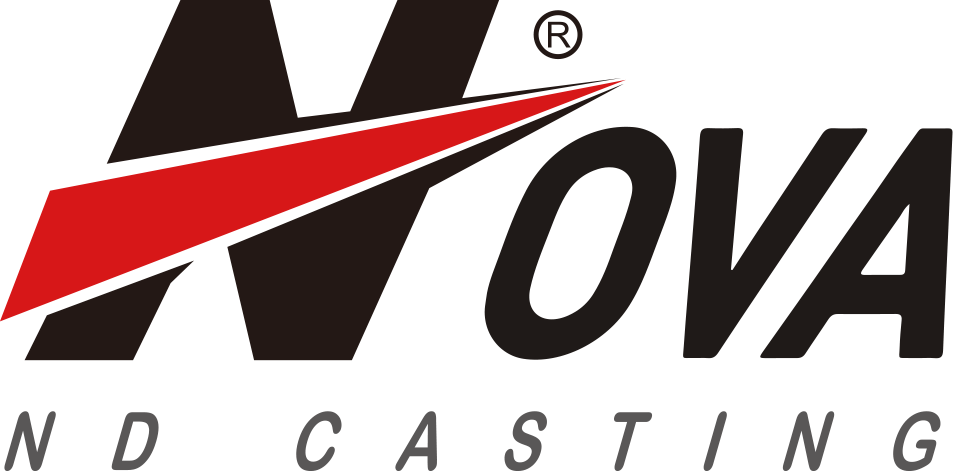Robust Design Principles for High-Performance Construction Machinery Castings
Understanding Challenges in Casting Performance Consistency
Getting consistent results from construction machinery castings means dealing with all sorts of manufacturing challenges. When things like cooling speed, metal mix, and mold behavior vary even slightly, they often create weak spots in the final product. Research indicates around 35% of early component failures happen when wall thickness varies more than 1.2mm across different parts. Then there's the real world stuff too - equipment constantly experiences repeated stress cycles and gets worn down by dirt and debris. All this makes it essential for engineers to design parts that can handle complex forces acting from multiple directions at once, especially during digging operations or when moving bulk materials around job sites.
System, Parameter, and Tolerance Design Frameworks for Robustness
Robust design employs a three-tiered approach:
- System Design: Establishing geometries resistant to fracture propagation
- Parameter Design: Optimizing alloying elements and heat treatment protocols
- Tolerance Design: Controlling dimensional accuracy to ±0.5mm in critical zones
The Taguchi Method has proven particularly effective, minimizing sensitivity to production variables through orthogonal array testing. For instance, parameter optimization in giga-casting processes reduces porosity defects by 40% while maintaining tensile strength requirements.
Case Study: Taguchi Method in Excavator Boom Casting Optimization
A recent project redesigned an 8-ton excavator boom casting using L9 orthogonal arrays, testing four control factors across three levels:
| Factor | Level 1 | Level 2 | Level 3 | Optimal |
|---|---|---|---|---|
| Silicon Content | 2.8% | 3.1% | 3.4% | 3.1% |
| Cooling Rate | 12°C/min | 18°C/min | 24°C/min | 18°C/min |
| Rib Thickness | 22mm | 25mm | 28mm | 25mm |
The optimized configuration increased fatigue life by 30% while reducing weight by 12%, demonstrating the method's effectiveness in balancing competing performance requirements.
Integrating Digital Twin Simulations to Enhance Robust Design
Advanced simulation platforms now enable real-time comparison between virtual prototypes and production castings. One foundry achieved 92% correlation between predicted and actual stress distribution patterns by implementing AI-driven digital twins, allowing engineers to iterate designs five times faster than traditional physical prototyping methods.
Material Selection and Structural Integrity in Construction Machinery Castings
Impact of Alloy Choice on Service Life and Casting Reliability
The choice of alloy plays a major role in how long construction machinery castings last before failing. When it comes to high-strength steel alloys versus regular carbon steel, tests show these stronger materials can handle repeated stress about 20% better under moving loads. This makes components last anywhere from 40 to 60 percent longer in big excavators according to research published by Ponemon back in 2023. For parts exposed to saltwater conditions like those found near coastal construction sites, chromium molybdenum alloys stand out. They cut down on stress corrosion cracking issues by roughly 35% when compared against nickel based options which tend to corrode much faster in such harsh environments.
Matching Materials to Load Conditions and Harsh Operating Environments
Materials used for casting need to handle several key requirements at once. They should withstand high stresses around 550 MPa minimum, work reliably across temperatures from minus 40 degrees Celsius up to 300 degrees, and resist corrosion over time. When building parts for hydraulic cranes, engineers often turn to aluminum-silicon alloys because these cut down on weight by about 30% compared to traditional metals, yet still hold up to nearly all of what steel can do under compression forces. That makes a real difference when dealing with heavy lifting equipment that needs to be moved around frequently. In the harsh conditions of offshore operations where pile drivers operate daily, special duplex stainless steels come into play. These materials have what's called a PREN value above 40, which basically means they fight off those pesky chloride attacks that tend to pit metal surfaces in saltwater environments.
Case Study: Ductile Iron vs. Cast Steel in Loader Arm Applications
Recent field tests compared ASTM A536 ductile iron and A27 cast steel in 12-ton loader arms under 2.5 million stress cycles. The ductile iron variant showed:
| Metric | Ductile Iron | Cast Steel | Improvement |
|---|---|---|---|
| Crack initiation delay | 1.8M cycles | 1.2M cycles | +50% |
| Energy absorption | 42 J/cm² | 29 J/cm² | +45% |
| Corrosion rate | 0.08 mm/yr | 0.21 mm/yr | -62% |
This data confirms ductile iron's superiority in high-impact, corrosive environments typical in mining operations.
Optimizing Geometry and Wall Thickness for Strength and Manufacturability
Addressing Failures from Inconsistent Wall Sections in Large Castings
Uneven wall thickness continues to be one of the main reasons why castings fail structurally in construction machinery. Components used in heavy equipment such as loader arms and parts of booms tend to crack when there's too big a difference between thick and thin areas, especially if the transition is more than 40%. According to a recent look at foundry operations in 2023, almost seven out of ten warranty issues came down to these sudden changes in wall thickness that mess up how metal solidifies during casting. Looking at actual examples shows something interesting too. When manufacturers create gradual transitions with a slope ratio of around 1 to 3 between different sections, they see about a quarter reduction in stress points compared to those sharp corners we typically avoid.
Designing for Uniform Wall Thickness and Optimal Cooling Rates
Maintaining consistent wall dimensions between 12–25 mm (depending on alloy type) ensures balanced heat dissipation during casting. Research shows uniform walls reduce residual stress by up to 34% in crawler track segments. Key strategies include:
- Applying minimum 1.5° draft angles for improved mold release
- Implementing tapered transitions (≈2 mm/mm gradient) near high-stress areas
- Optimizing riser placement using thermal simulation data
Reinforcement Ribs, Fillets, and Stress Concentration Reduction Techniques
Strategic rib placement increases component rigidity without compromising weight targets. In bulldozer blade castings, curved ribs with 8–10 mm fillet radii improved fatigue life by 400 cycles compared to sharp-cornered designs. Critical guidelines:
| Feature | Optimal Dimension | Performance Impact |
|---|---|---|
| Rib thickness | 60–75% base wall | Prevents sink marks |
| Internal radii | ≥6 mm | Reduces stress by 18–22% |
| Boss supports | 30° angular design | Eliminates shrinkage voids |
Using Simulation Tools to Refine Wall Transitions and Structural Flow
Modern foundries employ digital twin systems to predict solidification patterns before tooling begins. A recent analysis demonstrated how flow simulation reduced wall thickness errors by 92% in crane hook castings. These tools enable engineers to visualize:
- Metal flow velocities at critical junctions
- Temperature gradients across complex geometries
- Stress distribution under operational loads
By combining simulation insights with empirical data from over 1,500 casting trials, manufacturers achieve less than 1.2% dimensional variance in components exceeding 5 tons.
Tolerance Design and Process Control for Consistent Casting Quality
Managing Dimensional Variations to Prevent Assembly Issues
Precise tolerance management ensures cast components fit seamlessly in heavy machinery assemblies. Industry studies show dimensional errors exceeding ±0.5mm in construction machinery castings increase assembly rework rates by 34%. Modern foundries address this through 3D scanning paired with adaptive machining—correcting deviations as small as 0.1mm in post-casting stages.
Accounting for Shrinkage, Warping, and Core Shift in Solidification
Material expansion coefficients and cooling rates directly impact final casting dimensions. For example, ductile iron experiences 1.5–2% shrinkage during solidification, requiring pattern oversizing. Simulation tools now predict warpage with 92% accuracy by modeling thermal gradients, enabling proactive adjustments to mold designs.
Implementing Statistical Process Control in Foundry Production
Top manufacturers have seen their defect problems cut down around 40% when implementing real time Statistical Process Control systems. These advanced setups monitor over fifteen different factors during production including things like melt temps and sand compaction levels. Recent research from last year showed something pretty impressive too - factories using automated monitoring saw a massive drop of 62% in those pesky dimensional issues with loader arm castings. What makes these systems so valuable is how they catch problems early on. They'll spot when pouring speeds go outside that narrow window of plus or minus five seconds, stopping potential quality issues before whole batches get ruined.
Design for Manufacturability and Cost-Effective Reliability
Draft Angles, Undercuts, and Foundry-Friendly Design Guidelines
The shape of a casting has a big effect on whether something can actually be made in production. Adding those little draft angles between 1 and 3 degrees makes it much easier to get the mold parts separated after casting. Getting rid of those tricky undercuts also means fewer headaches for the toolmakers. We've seen from our work with several foundries that sticking to standard design rules for things like ribs and bosses cuts down on tooling fixes by around 15 to 20 percent. For hydraulic housings specifically, making sure the walls are tapered helps the molten metal flow better throughout the mold cavity, which means less trapped air bubbles that could ruin the final product quality.
Preventing Common Defects: Porosity, Cold Shuts, and Inclusions
Defect prevention begins with thermal management strategies. Uniform wall thickness (variations ≤10%) prevents isolated hot spots that cause shrinkage porosity, while rounded edges enhance metal flow to avoid cold shuts. A 2023 casting simulation study demonstrated 37% fewer gas inclusions when using optimized gating systems with turbulence-reducing filters in loader bucket castings.
Balancing Design Complexity with Cost Efficiency in Casting Production
Simplified geometries that maintain structural integrity reduce machining hours by up to 40% for excavator component castings. Modular designs with standardized mounting interfaces allow component reuse across machinery platforms without compromising load capacity. This approach lowers per-unit costs while maintaining the durability required for 10,000+ hour service life expectations.
FAQ
What are the main challenges in construction machinery casting performance?
Some primary challenges include cooling speed, metal mix variations, and mold behavior, which can cause inconsistencies and weak spots in the final products.
How does robust design improve casting consistency?
Robust design involves system, parameter, and tolerance models to ensure geometries, alloying elements, and dimensional accuracy are optimized—reducing sensitivity to production variables and improving performance.
Why are digital twin simulations useful in casting design?
Digital twin simulations allow real-time comparison between virtual prototypes and physical castings, improving the accuracy and speed of design iterations.
What materials are preferred for high-impact environments in casting?
Materials like ductile iron and chromium molybdenum alloys are preferred due to their superior performance in handling stress cycles and corrosive environments.
How do simulation tools aid in wall transition design?
Simulation tools enable visualization of metal flow, temperature gradients, and stress distribution, helping refine wall transitions and ensure uniform wall thickness for better structural integrity.
Table of Contents
- Robust Design Principles for High-Performance Construction Machinery Castings
- Material Selection and Structural Integrity in Construction Machinery Castings
- Optimizing Geometry and Wall Thickness for Strength and Manufacturability
- Tolerance Design and Process Control for Consistent Casting Quality
- Design for Manufacturability and Cost-Effective Reliability
-
FAQ
- What are the main challenges in construction machinery casting performance?
- How does robust design improve casting consistency?
- Why are digital twin simulations useful in casting design?
- What materials are preferred for high-impact environments in casting?
- How do simulation tools aid in wall transition design?


